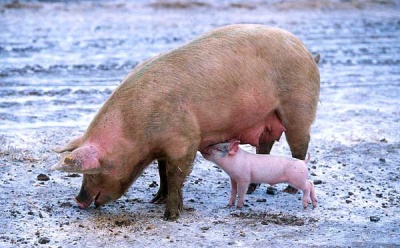Pig Development: Difference between revisions
From Embryology
No edit summary |
|||
| Line 24: | Line 24: | ||
==Internet Links== | ==Internet Links== | ||
* [http://www.ncbi.nlm.nih.gov/genome/guide/pig/ NCBI - Pig Genome] | * [http://www.ncbi.nlm.nih.gov/genome/guide/pig/ NCBI - Pig Genome] | ||
* [http://www.genome.iastate.edu/maps/pigbaseintr.html USA - PigBase] a computer database that includes information on papers published about gene mapping in the pig. | |||
* [http://www.dpi.nsw.gov.au/agriculture/livestock/pigs/breeding NSW Agriculture - Pig breeds and breeding] | * [http://www.dpi.nsw.gov.au/agriculture/livestock/pigs/breeding NSW Agriculture - Pig breeds and breeding] | ||
* [http://agbu.une.edu.au/pigs/pigblup/pgi/ AGBU - Pig Genetics] | * [http://agbu.une.edu.au/pigs/pigblup/pgi/ AGBU - Pig Genetics] | ||
Revision as of 18:25, 14 April 2010
Introduction
Pig (taxon- Suidae) development is studied extensively due to the commercial applications of pigs for meat production and potential xenotransplantation.
Taxon
Genbank common name:
Taxonomy Id: Rank:
Genetic code:
Mitochondrial genetic code: Translation table 2 (Vertebrate Mitochondrial)
Lineage( abbreviated ):
Pig Development
- Female pigs can become pregnant at around 8 to 18 months of age.
- The pig has an estrus cycle occurring every 21 days if not bred.
- Male pigs become sexually active at 8-10 months of age.
- A litter of piglets is between 6 and 12 piglets.
Internet Links
- NCBI - Pig Genome
- USA - PigBase a computer database that includes information on papers published about gene mapping in the pig.
- NSW Agriculture - Pig breeds and breeding
- AGBU - Pig Genetics
